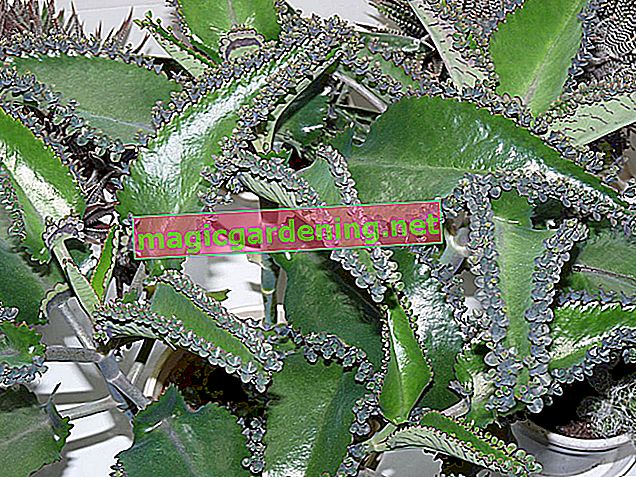
How is pouring?
The succulent plant is able to store liquid in the leaves and to take care of itself from this supply for a while. On the other hand, it is very sensitive to waterlogging. That is why it is only watered when the earth is largely dry. Then fill up with the water and pour away any water that collects in the coaster after a few minutes.
also read
- Proper care of the Kalanchoe Madagascar
- Caring for the Kalanchoe Thyrsiflora
- Proper care of the Kalanchoe Humilis
How is fertilization done?
Fertilize every four weeks during the growing season from October to March. A commercially available liquid fertilizer, such as that used for other indoor plants, is suitable.
When do you repot?
The Kalanchoe Pinnata does not develop a very large root system, so repotting is only necessary every two to three years. The ideal time for this maintenance measure is spring.
How is it cut?
Kalanchoes only have to be pruned if they are unsightly bulky. You can then:
- Shorten the shoots in the top third to give the plant a more attractive shape.
- Unsightly shoots that have no more leaves in the lower area, cut back just above the ground.
In flowering Kalanchoes, the stem is only shortened when no fresh buds appear. Before doing this, only snap out the parts of the plant that have faded.
How do you overwinter?
The breeding leaf can be overwintered at room temperature. Alternatively, you can place the plant cooler in the cold season, but the temperature should not fall below 15 degrees.
Which pests and diseases are threatened?
The Kalanchoe Pinnata is very robust and is rarely attacked by vermin or diseases:
- Root rot: If too much water is poured, the roots will die. The lifelines can then no longer absorb water and the plant dries up, even though it has been watered regularly. Pot the succulent plant in fresh substrate as soon as possible, it will often recover.
- Powdery mildew: This also occurs in indoor plants. Remove infected leaves and dispose of them with household waste. In the event of severe infestation, treat with a suitable fungicide.
- Aphids or mealybugs: Keep plant separate and check other houseplants. Only treatment with a systemic insecticide or biological contact agent helps here.
Tips
In many cultures, the Kalanchoe Pinnata is a highly effective medicinal plant. It is used successfully here for inflammation, ulcers and skin problems.








